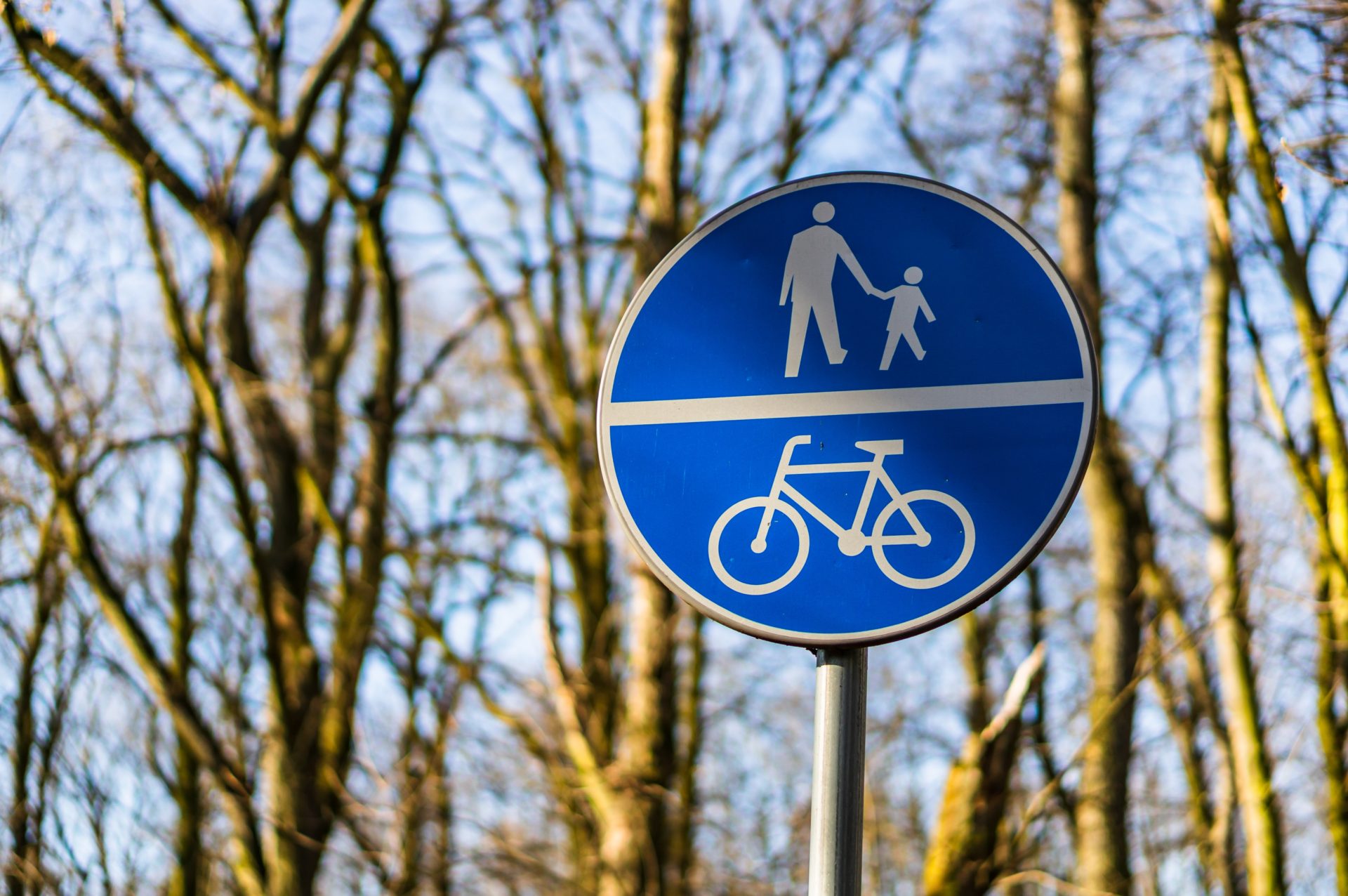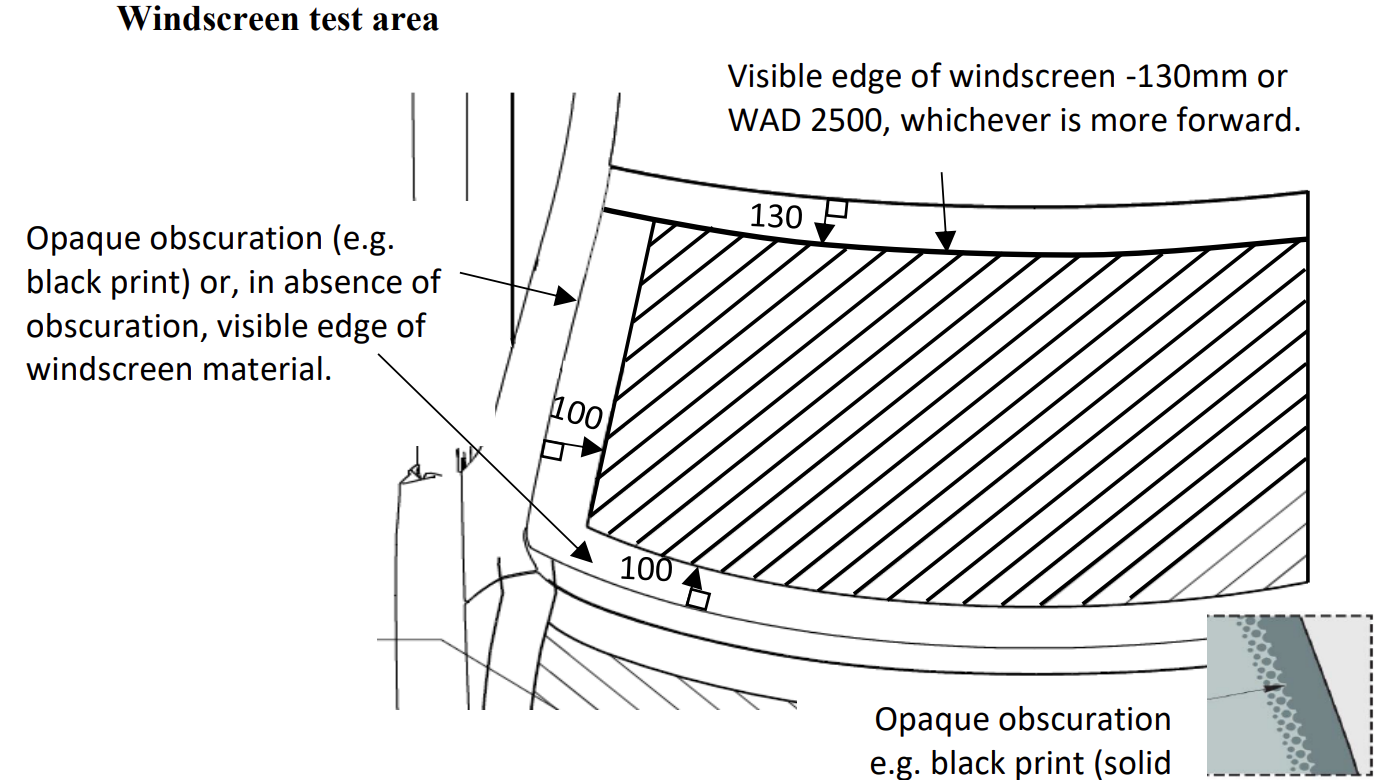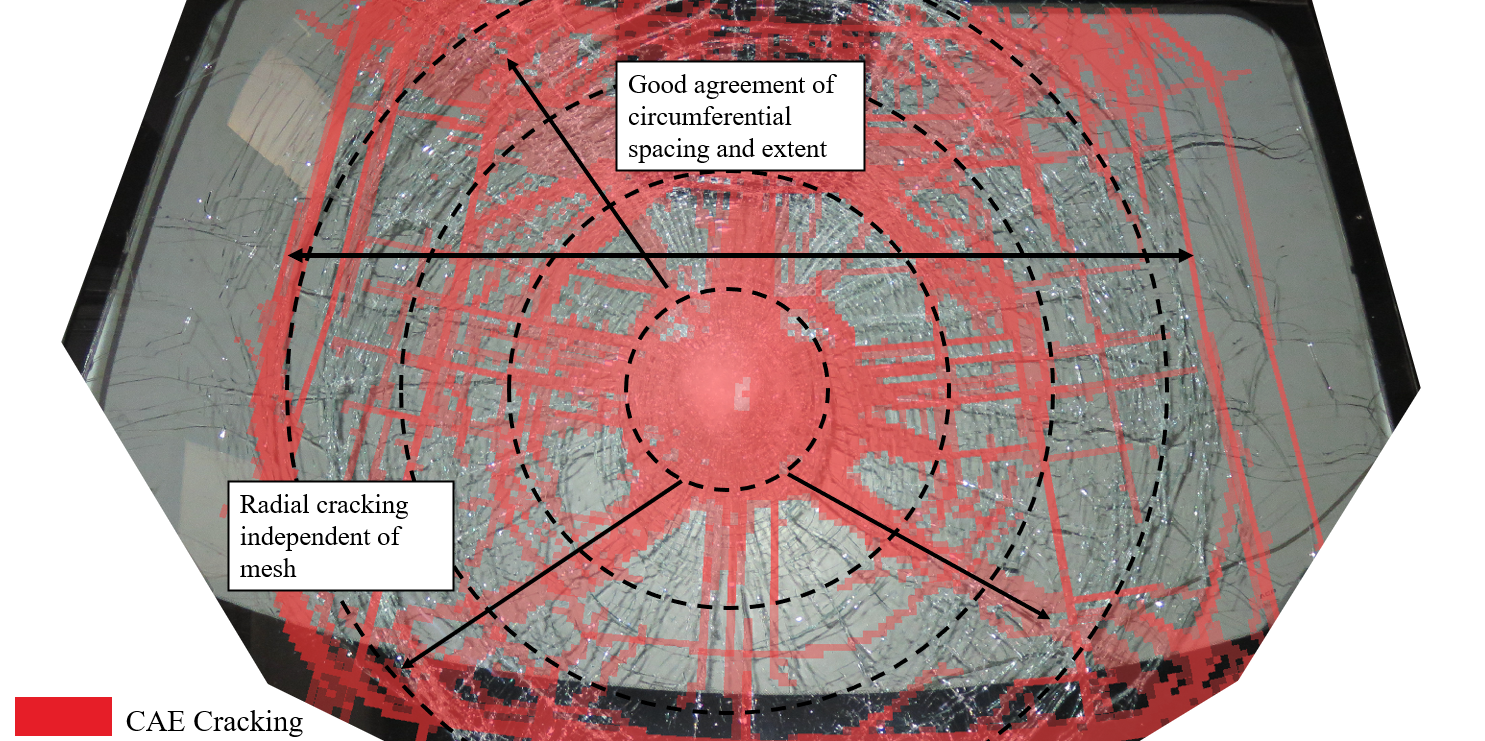Walking Safe: The New Era of Pedestrian Protection with CAE
World Health Organization statistics show that each year, approximately 300,000 pedestrians and cyclists lose their lives on roads worldwide.
Pedestrian and cyclist deaths account for more than a quarter of all road traffic fatalities, a figure exacerbated by rapid urbanisation and population growth. These trends highlight the need for improved pedestrian safety measures and innovations in vehicle design to protect the most vulnerable road users.
Over the last few years, many regulatory bodies have expanded their provisions including the introduction of stricter safety standards, and the implementation of advanced technologies aimed at protecting pedestrians and cyclists.
Recent examples of such updates include:
- UNECE R127: Inclusion of windscreen test zone and cowl monitoring area.
- Euro NCAP: Dropped default green scoring on windscreens and now mandates impact testing for cyclists as well as adults and children.
- China NCAP: Adopted windscreen impact testing for cyclists.
- NHTSA: Proposed Federal Motor Vehicle Safety Standard No. 228 for pedestrian head impact protection.
OEMs are responding to these regulatory changes by integrating new passive and active safety features into their vehicle designs. While these advancements are promising, they also present significant challenges, particularly in simulating pedestrian impacts both accurately and efficiently.
To truly meet future demands, we must adopt innovative new approaches and methods.
The Challenge with Glass
Image source: UNECE R127 Windscreen Test Zone
Until very recently, pedestrian safety standards largely ignored the windscreen.
Legal test zones typically stopped short, and consumer tests scored windscreen impacts automatically, depending on their proximity to the frame structure. However, the introduction of the windscreen test area to the R127 regulation has exposed the need for a more accurate and robust method for modelling laminated safety glass.
Traditional Ansys LS-DYNA® approaches, such as using PART_COMPOSITE or MAT_LAMINATED_GLASS, are limited. These methods, particularly when using element erosion to simulate cracking, tend to exaggerate the loss of stiffness and create a non-physical loss of mass. While methods to mitigate these effects, such as bespoke cob-web meshing, have been developed, they are often impractical in a production environment.
To address this limitation, MAT_GLASS, a smeared fixed crack material model, has been developed. This more sophisticated approach captures tensile cracking within the material, rather than deleting the element, ensuring there is no loss in mass. It also maintains residual stiffness and strength in the plane of the crack, in addition to capturing crack opening and closing effects.
At Arup, we have combined MAT_GLASS and MAT_HYPERELASTIC_RUBBER (representing the PVB inter-layer) using a mixture of thick shells, solids, and cohesive elements. This combination has resulted in a highly compelling windscreen model, which has proven to be very accurate in testing. This model can also be applied to other glass-sensitive load cases, such as roof crush, IHI, and some front impact scenarios. You can read more about it here.
Image source: Arup Laminated Safety Glass Model
Other recent enhancements in Ansys LS-DYNA are also advancing pedestrian safety modelling, especially with active systems. For instance, *DEFINE_PRESSURE_TUBE can predict signals in a pressure tube behind a vehicle’s bumper foam. While not yet suitable for sensor calibration in my experience, it’s a valuable aid in designing bumper systems for the hardest-to-detect (HTD) sensing.
Human Body Modeling (HBM) is now mandated by some consumer regulations to verify aspects like deployed bonnet strength and head impact timing. These present challenges for CAE engineers. Positioning a human body model is often more difficult than using traditional Anthropomorphic Test Device (ATD) dummies. Fortunately, Oasys PRIMER offers tools to assist with this.
Additionally, assessing head impact timing is difficult due to its subjective nature, relying on identifying the first point of contact. To enhance measurement repeatability, we’ve developed a bespoke SENSOR-based method to generate d3plot output states at the exact moment of contact (get in touch for more info!).
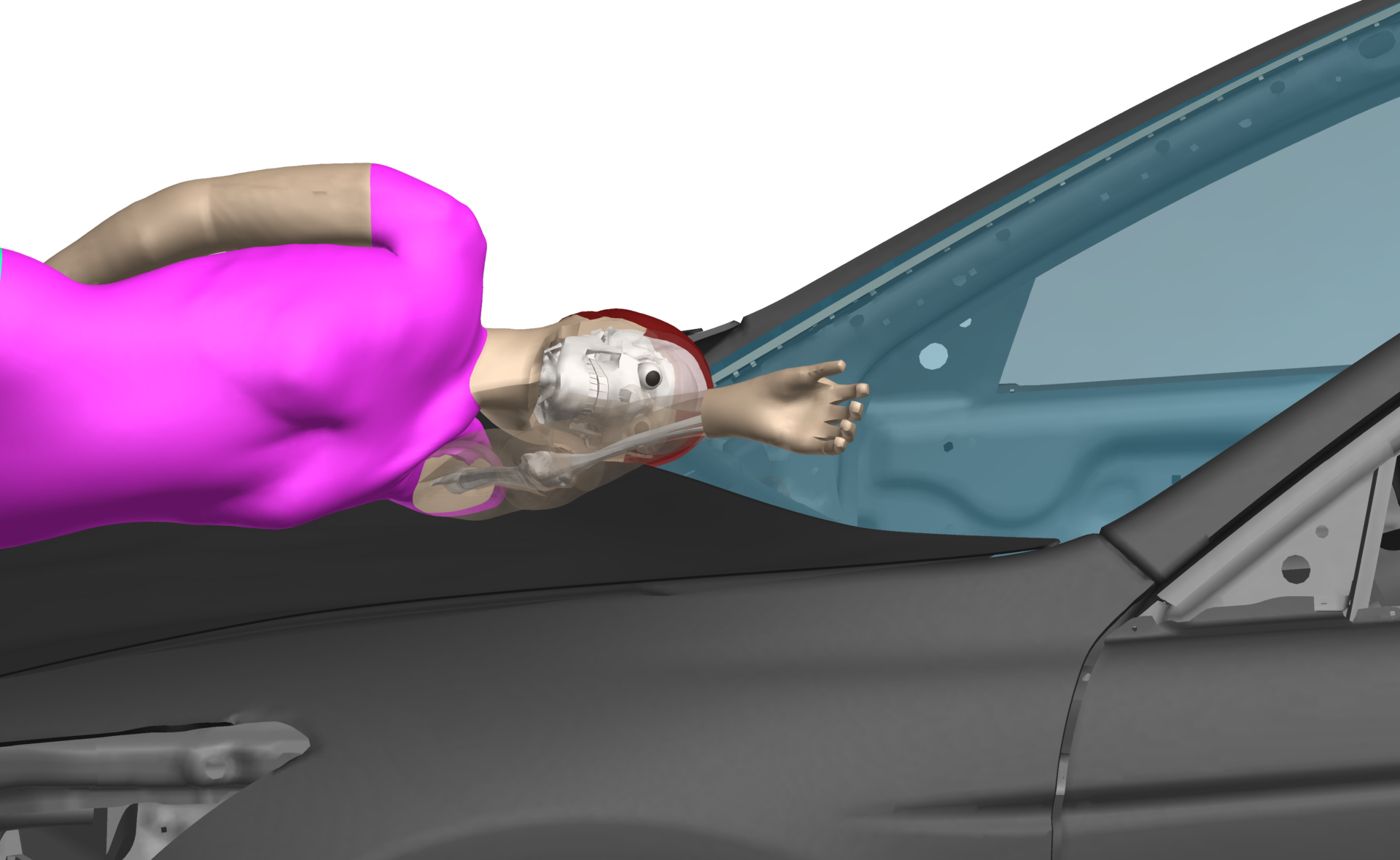 Image source: Adult 5th percentile female THUMS HBM impact
Image source: Adult 5th percentile female THUMS HBM impact
Streamlining Safety
With pedestrian impact, having the tools and technology to accurately predict injury is only half the battle. The other half is managing the sheer volume of analyses required, which is only increasing with expanding regulations.
For example, determining the head impact status for Euro NCAP may require analysing over 150 impact locations. R127, with its different impact speed and need for robustness, could require upwards of 400 analyses. This totals around 550 individual analyses, and that’s before considering other regions, each with their own unique requirements. With such volume of output, one must accept that it’s not possible to check every result in the usual way: by opening it and viewing it manually.
Automation is essential
At Arup we use Oasys REPORTER to auto-process our pedestrian impacts and to generate summaries from families of analyses. It’s essential to have methods in place that allow for efficient assessment of results data, such as energies, accelerations, and cut section views, to minimize the risk of any modelling errors going unnoticed.
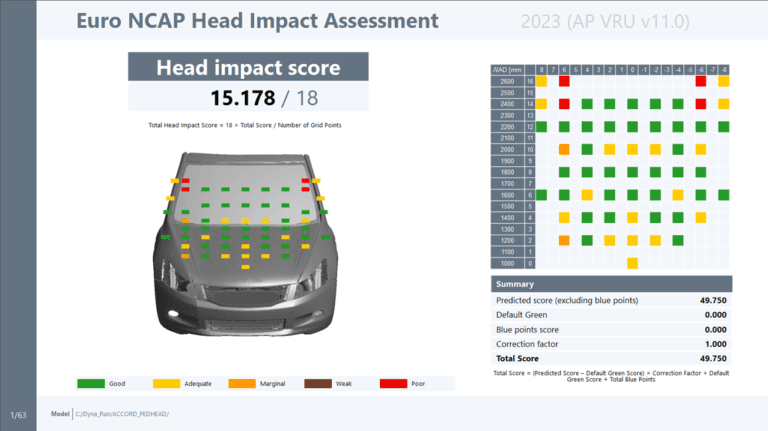 Image source: Oasys REPORTER Euro NCAP Head Impact Template
Image source: Oasys REPORTER Euro NCAP Head Impact Template
That’s not all though. For head impact, once the results have been extracted, they need to be assessed, compared, and analysed. That’s why, ten years ago, I started work on the HIC Area Calculator.
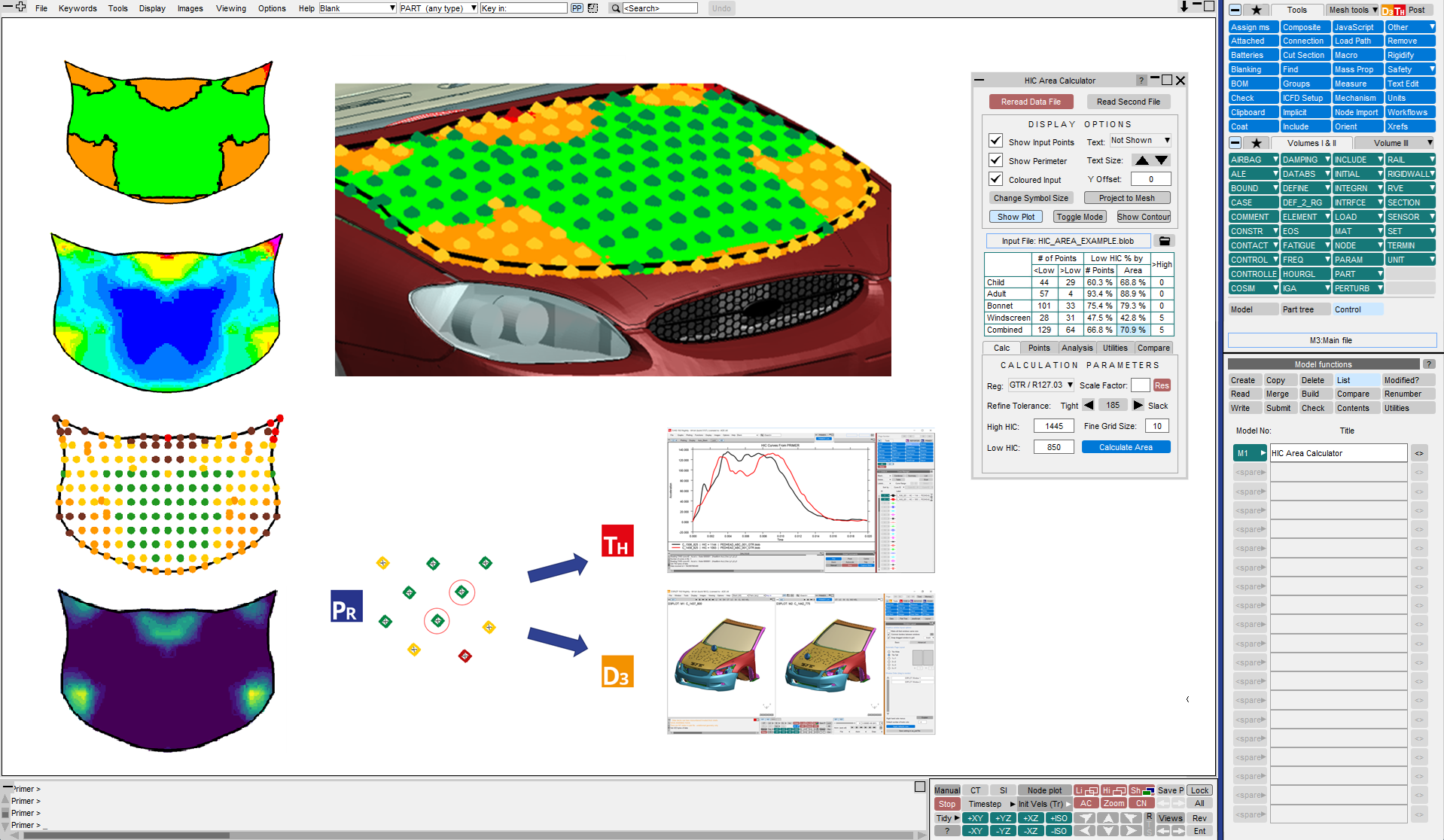 Image source: Oasys PRIMER HIC Area Calculator
Image source: Oasys PRIMER HIC Area Calculator
The tool, originally developed to calculate area distributions for R127, has since evolved to support multiple protocols and integrate seamlessly with Oasys D3PLOT and T-HIS. Now embedded within Oasys PRIMER, it serves as the central hub for our pedestrian head impact work. This integration enables quick comparison of analysis sweeps, curve plotting, and animation viewing—all accessible directly within PRIMER. Gone are the days of manually trawling through directories for result data.
The AI Advantage
Looking ahead, the rise of AI in vehicle design seems inevitable. While it won’t replace engineers entirely anytime soon (hopefully!), I believe AI will have an ever-increasing place in our workflows by reducing analysis volume.
Previously, I suggested that over 500 analyses were required per full loop of head impacts. In the not-too-distant future, I expect that we may only need to run that many at the start and end of a vehicle programme. In between, we will be running vastly reduced loops and using AI to fill in the blanks.
Lower leg impact is another area where AI could provide significant benefits. Currently, protocols require analyses using both the Flex-PLI and aPLI leg impactors, effectively doubling the simulation workload. Until a unified impactor is adopted, could AI offer a method for analysing one impactor and predicting the results for the other?
Tools such as Ansys SimAI™ are demonstrating that this future is closer than we might think.
Conclusion
As vehicle design evolves to meet increasingly stringent pedestrian safety standards, simulation engineers must navigate a complex landscape of technology, volume, and accuracy.
The advancements in material modelling, automation, and AI-driven tools are already reshaping workflows, offering both solutions and opportunities to address these challenges.
However, there is still work to be done. Improving pedestrian safety will require ongoing collaboration, practical innovation, and the smart use of emerging technologies. By addressing today’s challenges and pushing the boundaries of what’s possible, we can take pedestrian safety in vehicle design to an even higher standard.
Ben Crone
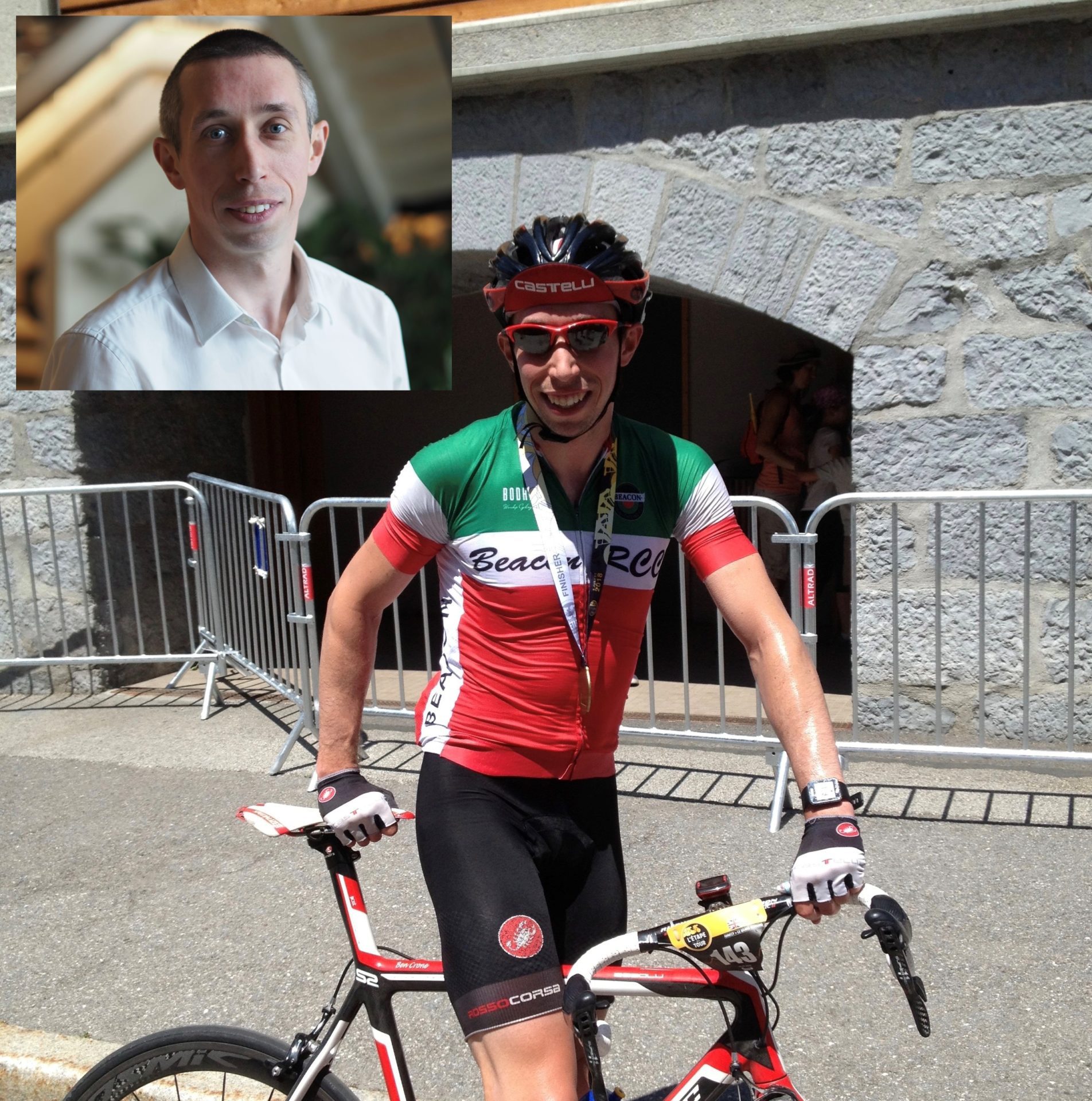 Ben Crone is a leader in the Product Engineering Practice at Arup’s Technical Specialist Services Portfolio. With over 15 years of experience in the automotive industry, Ben is an expert in using LS-DYNA for pedestrian impact analysis. He has successfully delivered numerous projects, and his innovative pedestrian safety tools are utilized by safety departments worldwide. As an avid runner and cyclist, Ben is passionate about improving vehicle safety for vulnerable road users.
Ben Crone is a leader in the Product Engineering Practice at Arup’s Technical Specialist Services Portfolio. With over 15 years of experience in the automotive industry, Ben is an expert in using LS-DYNA for pedestrian impact analysis. He has successfully delivered numerous projects, and his innovative pedestrian safety tools are utilized by safety departments worldwide. As an avid runner and cyclist, Ben is passionate about improving vehicle safety for vulnerable road users.
Ben works closely with the Oasys LS-DYNA Environment software business and provides a link between the development of digital products and their application on engineering projects.

